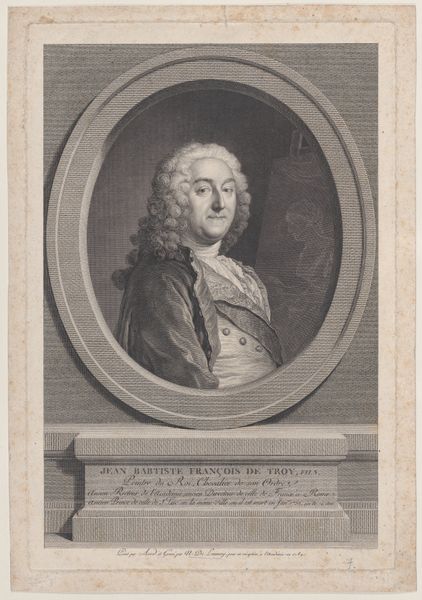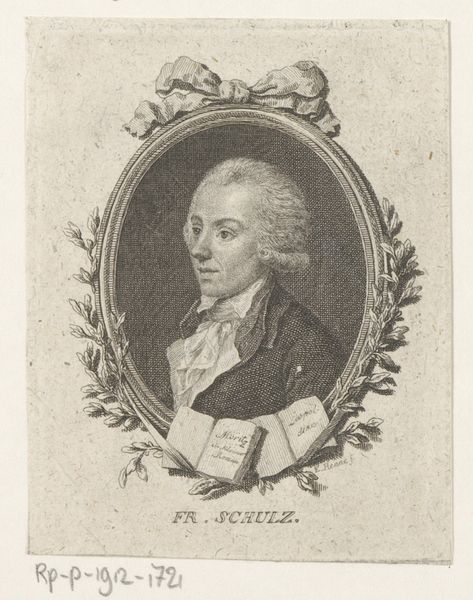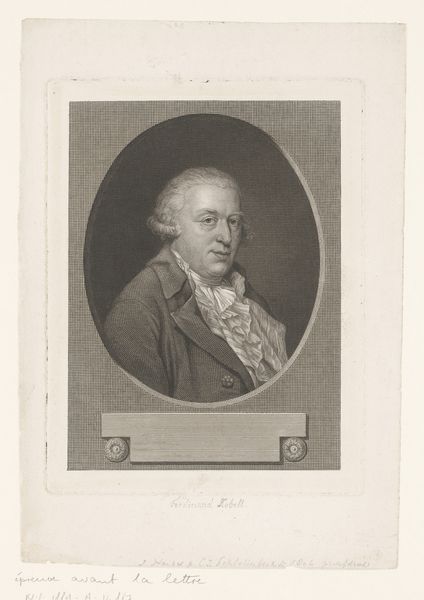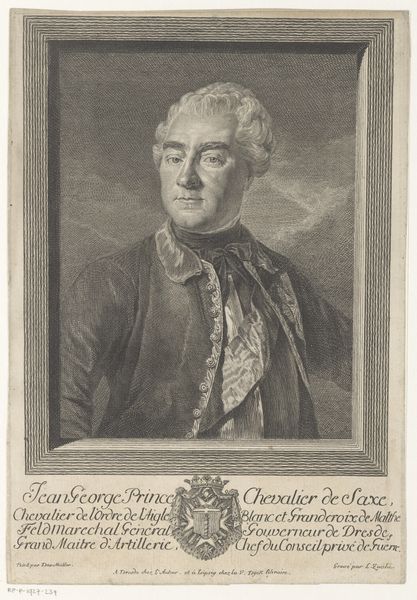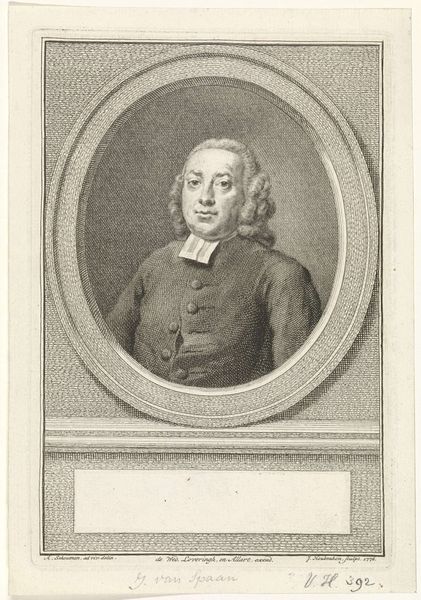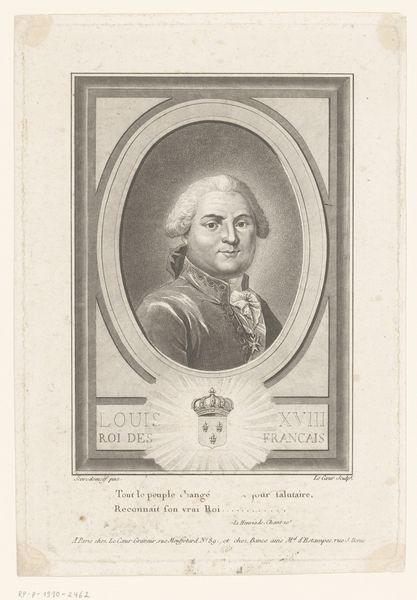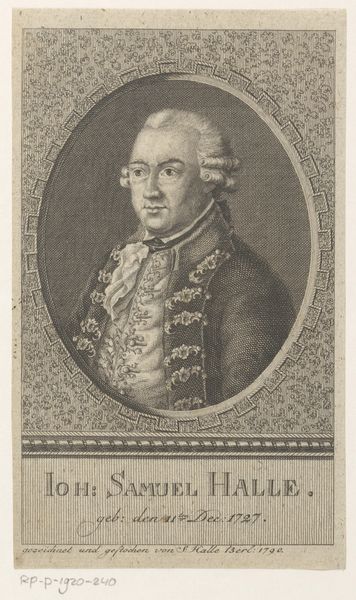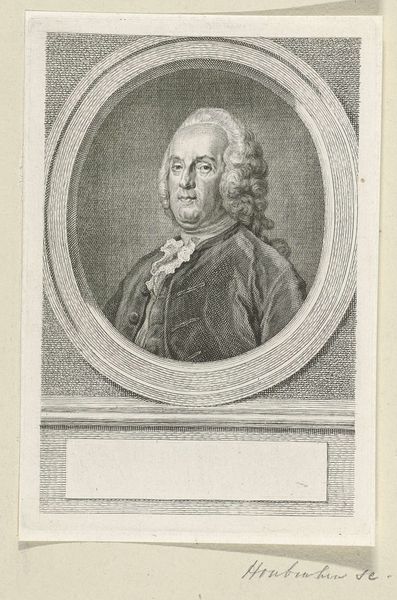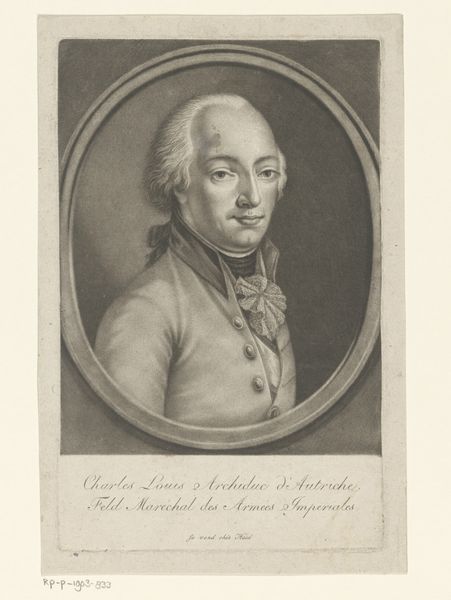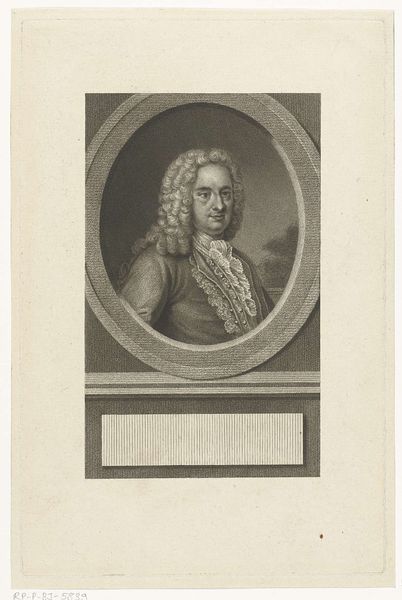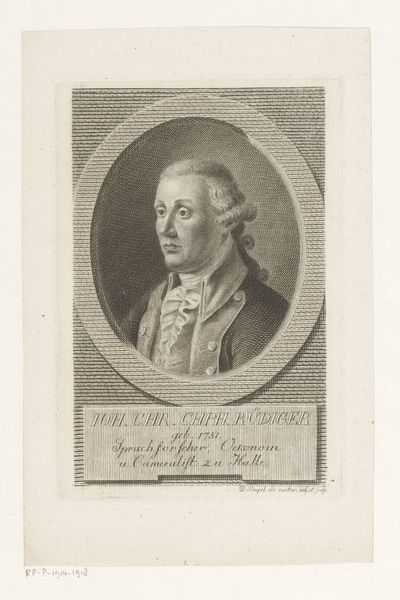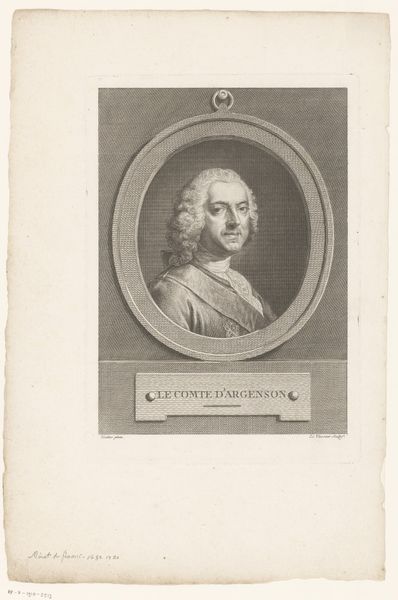
graphic-art, print, engraving
#
portrait
#
graphic-art
#
baroque
# print
#
old engraving style
#
line
#
engraving
Dimensions: height 154 mm, width 111 mm
Copyright: Rijks Museum: Open Domain
Curator: Let’s delve into this piece. What we have here is a print from between 1755 and 1765, "Portret van Nicolas Henry Tardieu", made by Jacques Nicolas Tardieu. It is an engraving, falling squarely into the baroque portraiture tradition. Editor: Okay, so right off the bat, the overwhelming feeling I get is one of powdered wigs and hushed conversations in dimly lit rooms! I'm kidding...sort of. But there's this undeniable sense of formal rigidity and quiet confidence radiating from the sitter. The lines feel so delicate, yet the overall impression is bold and intentional. Curator: The delicacy you're perceiving, that comes from the fine lines of the engraving technique, of course. It’s fascinating to consider the role portraiture played then. It wasn’t just about representation, was it? It was also about reinforcing social hierarchies, constructing identities within those strict confines. Nicolas Henry Tardieu was from a dynasty of engravers, so the implications here are multi-layered. Editor: Exactly! He's presenting himself, crafting this image that is as much about his status as his actual appearance. Though, I must admit, even the wig seems to have a performative element, sitting perfectly, in place as if in an act. I wonder what sort of 'mask' this conveys, what the work it asked him to undertake? Curator: Thinking of this in terms of identity and masking is especially apt. His posture, the tilt of his head, the slightly averted gaze...all of it contributes to a very carefully curated performance of self, fitting very squarely within societal expectations for men of stature at the time. Consider also what feminist theorists such as Judith Butler said in *Gender Trouble,* that all gender is performative and there is no ‘original’ or ‘authentic’ gender. The gender performativity becomes ever more nuanced. Editor: So interesting to see the different nuances and levels! For me, looking closer, it also triggers thoughts around time. How long it must have taken to create each individual stroke, the incredible dedication of hand and eye. The meticulous labour creates its own echo. How long must he pose? How was each man complicit with his role in the era? Curator: Precisely, this invites us to question both the depicted identity and the socio-historical landscape framing its making and reception. To truly consider the complexities that these historical images, and indeed their legacies, open up. Editor: Agreed, thinking through all these considerations opens many exciting points for discussion! The quiet whispers echo powerfully.
Comments
No comments
Be the first to comment and join the conversation on the ultimate creative platform.
